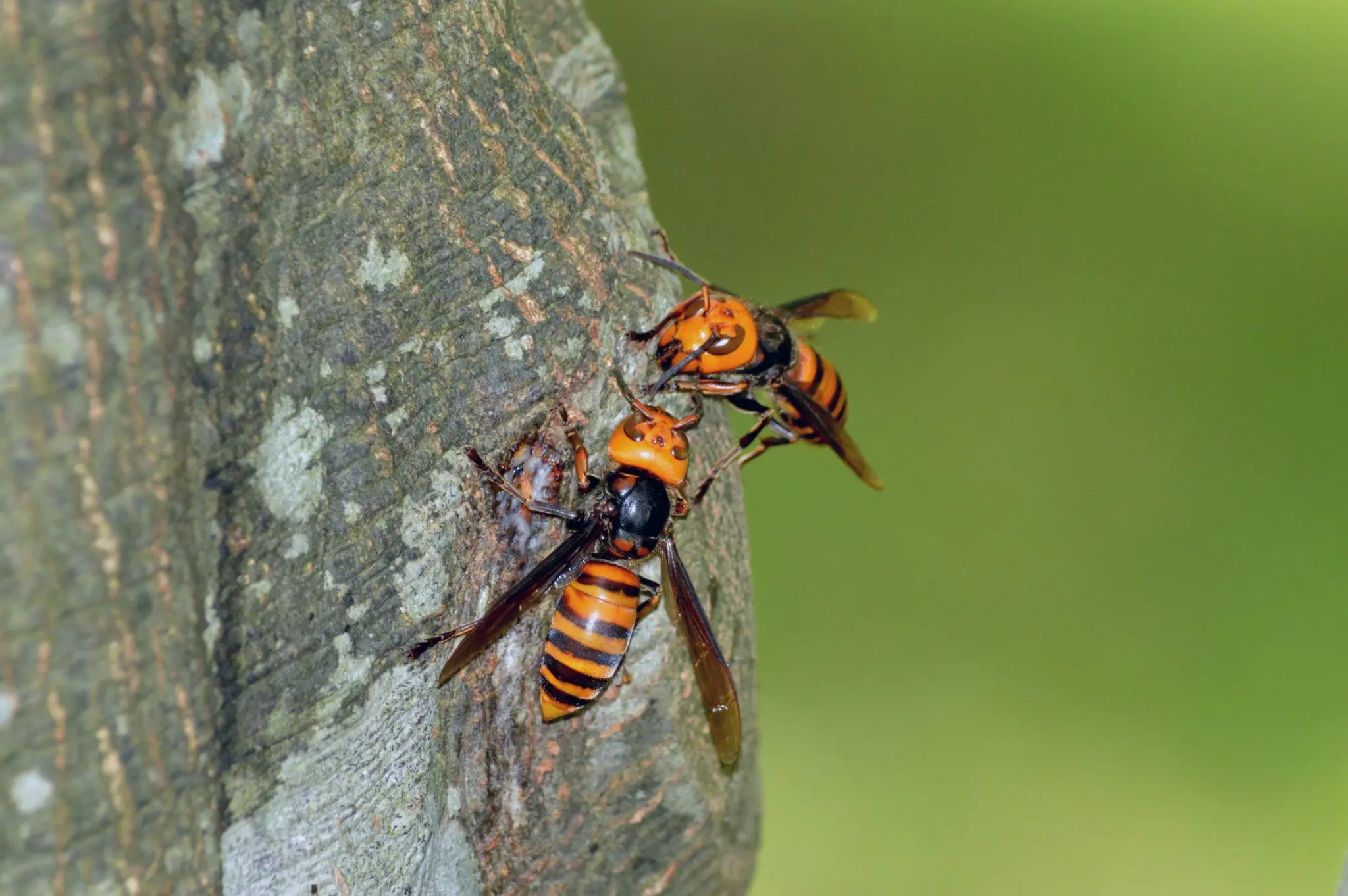Should I Worry About Murder Hornets?
2020 has been full of surprises. It is not surprising that everyone was alarmed at the announcement of the Murder Hornet invading the US. With so many things to worry about, we decided to answer the trendy question, “Should I worry about Murder Hornets?”
Why The Concern?

If it were just one or two hornets that hitched a ride on a ship, it wouldn’t be newsworthy. The concern is that it appears they survived the winter. This seems to indicate they have established some sort of a presence on US soil.
Why The Ominous Name?
A Murder Hornet is better known by its common name of Asian giant hornet (V. Mandarinia). This hornet attacks bees, bites off their heads with its large biting mouthparts and carries the body back to feed its young.
A colony of Asian giant hornets large enough to send out dozens of raiding food gatherers could wipe out an entire hive of bees. Enough raiders could demolish a beehive consisting of thousands of bees in a few hours.
Does It Kill People?
They are not people murders as the name may seem to indicate. That being said, some people do die from being stung by them, but that is the case with many insect bites and stings as allergic reactions come into play. For those without allergic reactions, people survive dozens of stings.
Are They Brand New to North America This Year?
No, there was a nest intercepted in CA in 2016 and a nest was tracked down and destroyed in Vancouver, Canada in the fall of 2019.
Is This the First Hornet Like this to Invade North America?

No, there have been others including the European hornet.
Do They Just Go After Honeybees?
No, they feed on all sorts of insects. It is mostly the larger autumn time raids when the colonies get pressured to gather more food. The Asian giant Hornets will gather larger groups of raiders together to attack higher yield targets such as beehives or other wasp and hornet nests.
How Big Are They?
They are the largest wasp in the world measuring 5 centimeters (2 inches) long with a wingspan that can surpass 7 centimeters. They have a distinguishing orange head with the body being composed of black and orange.
How Aggressive Are They?
Like most wasps and hornets, they become more aggressive toward their prey as the fall season progresses creating more demand for food from high nest populations and diminishing food availability. Since humans aren’t on their list of favorite foods to eat, they only become aggressive toward people if provoked. Provocation may not be intended, but the point is they don’t get on human hunting sprees.
How Bad is Their Ating?
The Asian giant hornet can deliver 1,100 micrograms per sting compared to the tiny 150 from a honeybee. It is reportedly far worse than a yellow jacket but not as bad as a bullet ant. Japan reports 40-50 people dying annually from their sting, but that includes individuals with an allergy to insect venom. According to a paper in Japan, those hospitalized with fewer than 50 stings had a good chance of survival.
An interesting point is they have a stinger that is long enough to get through a beekeeper suit. If you plan on playing catch with their hive, you may want to double up on the bee suit.
What Does This Mean for the Honeybee Population?
Because of the threat that the giant hornets pose to the types of honey bees in the US, scientists are working on minimizing the opportunity for the Asian giant hornet to get established. There are other honey bee variations that are better at defending themselves against this predator such as the Asian honey bee.
When a giant Asian hornet marks one of these Asian honey bee nests with a pheromone inviting other giant hornets to join the attack, the Asian honey bees recognize the scent and go into defense mode. They pull within the hive and wait for one of the giant hornets to venture in. The honey bees will then swarm the invader and overwhelm the hornet with an increase in temperature and carbon dioxide to levels the bees can survive but the hornet cannot. The bees can only fend off so many hornets in this manner, but at least they have a defense.
The bees in the US do not recognize the hornet pheromone as a threat. If efforts to keep the giant Asian hornet out of the US are unsuccessful, it will be another argument for increasing honeybee species diversity in the US.
Where To Go From Here?
Luckily, most of us will probably never see these murder hornets. We can keep worrying about what flavor of yogurt we need to buy this week and other less than life-threatening daily decisions. If you come across a nest, notify your state department of agriculture so it can be verified and tracked.
If you are dealing with other stingers with wings, reach out to the wasp and hornet experts at rovepestcontro.wpengine.com.
